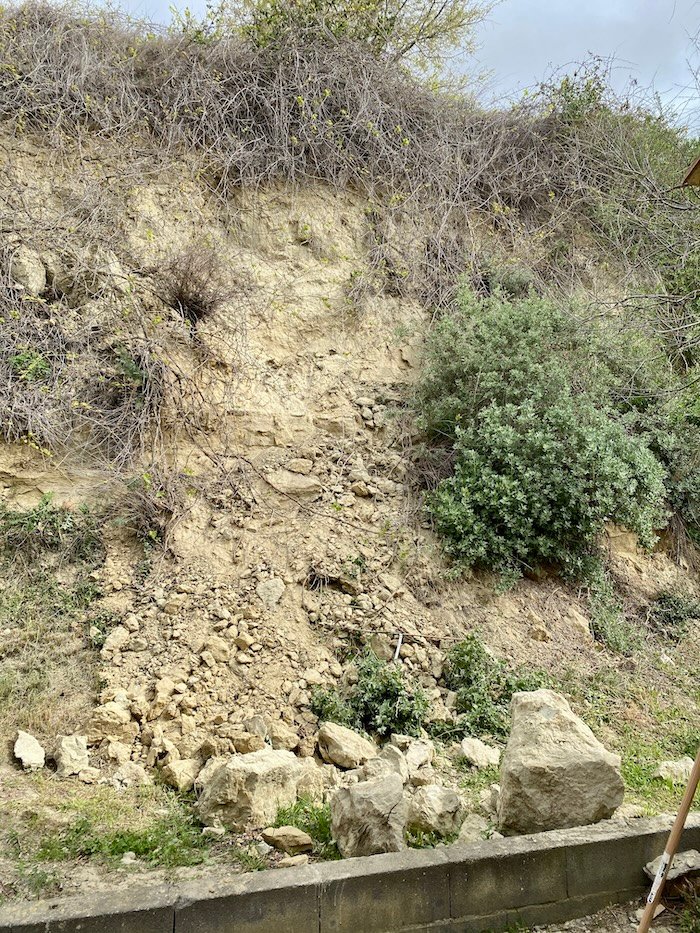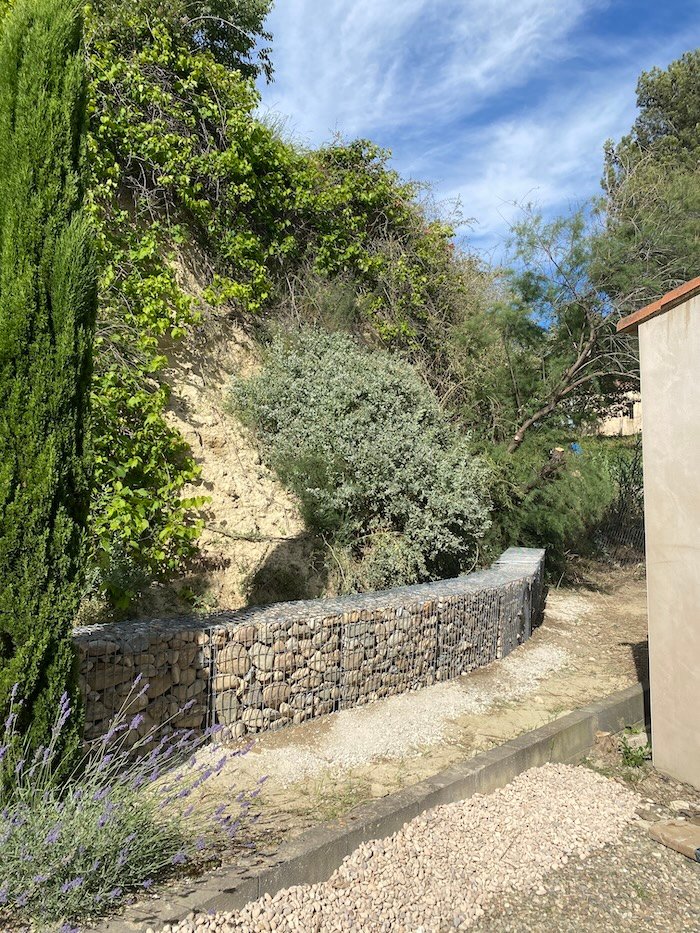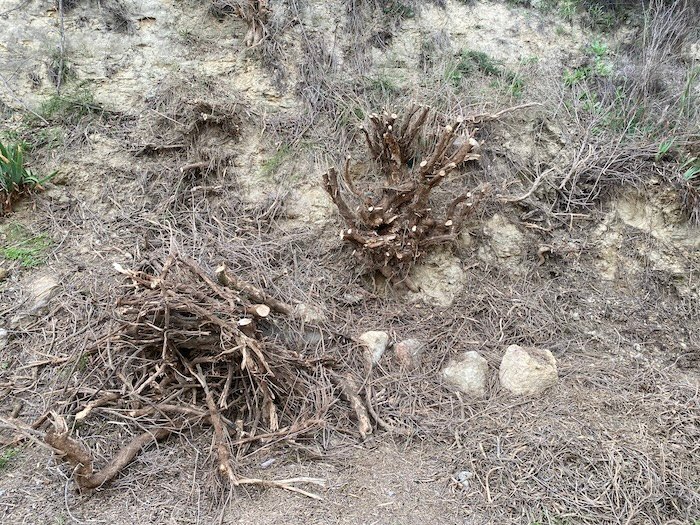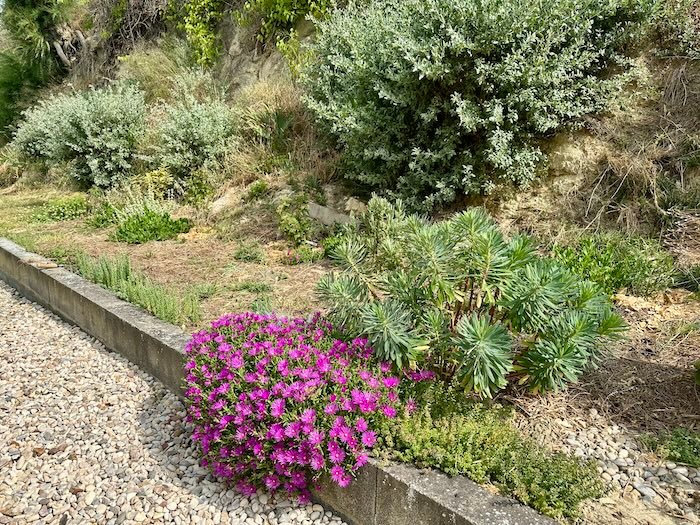Our garden is located on the middle level of a terraced hillside and on its Northern edge bordered by a steep and almost straight slope of about 6-8 meters height. From what we can see, the hill seems to be made mostly of clay with a few firmer rocks in it. We do hope that back in the days when this hillside was building-planned someone somewhere did some serious static and structural calculations since there is a large house and swimming pool on the next level up… But anyway, on the outside it’s mostly clay and that is prone to erosion: one morning in March 2024 we noticed that a smallish part of the hillside had come down with some big clay “boulders” (that dissolved in the next heavy rain). The Parthenocissus vines covering the slope in summer had dried up over winter and let go…
So what to do? After some research and talking to gardeners and landscapers we decided to put in gabions in that area of the garden to help retain the earth.


Then in the summer, despite lots of rain in the spring, almost all of the supposedly indestructible Atriplex halimus shrubs turned grey and dead. I suppose they had not been trimmed well for several years and had just grown too big and old. The gardener came and cut them all down to the nub, leaving behind an ugly empty moonscape. Despite the gardener’s sang-froid, I couldn’t really believe that the Atriplex would come back. So I spent the winter putting in loads of other plants to help retain the soil by rooting deeply into the slope:
- Baccharis pilularis (Coyote brush)
- Cistus
- Lippia / Phyla nodiflora
- Asphodelus fistulosus
- Santolina chamaecyparissus
- Chrysopogon zizanioides (Vetiver)
- Carpobrotus edulis
- Ballota pseudodictamnus
- etc.
Of course, the gardener was right and this spring almost all the Atriplex came back dense and green. Since they have a strong allelopathic effect on the plants around them (mostly because of the salt their leaves put in the earth) I will have to move some of the new additions to spots where they are not directly competing with the Atriplex. And I will keep the Atriplex well-trimmed so they don’t grow that big again.
Right now the slope is pretty much covered in grasses and weeds (which also help to retain the soil) so it’s hard to see all the new additions. From what I can glimpse, Cistus and Santolina look good, Lippia and Carpobrotus are spreading out, some vetiver plants are coming in green, some coyote brush has survived, but the asphodelus seem to have disappeared. We will have to wait for fall to see which will really make the cut by making it through the summer on this totally sun-exposed hillside. Until then I keep throwing seeds at the slope as I’m clearing out faded spring bloomers like Nigella or poppies.



Leave a Reply